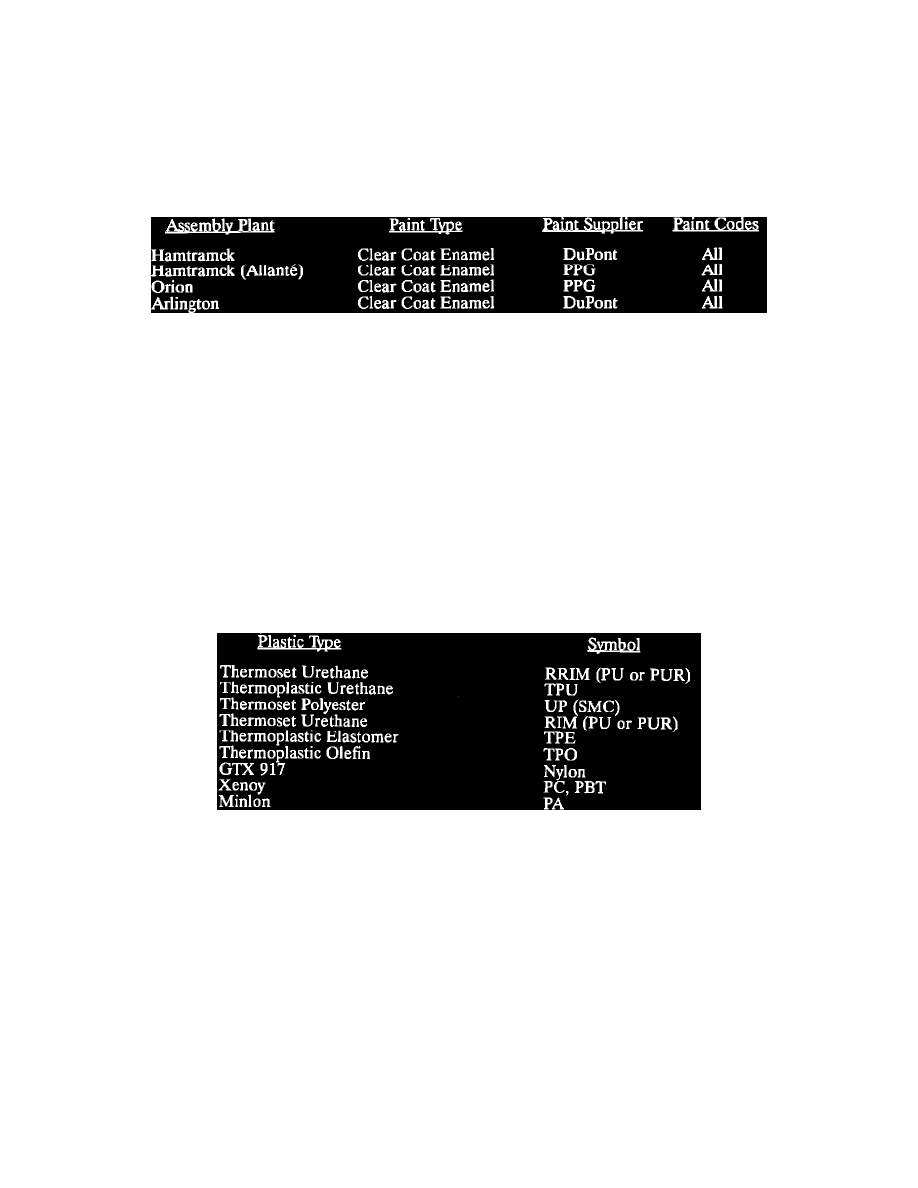Fleetwood FWD V8-300 4.9L (1993)

Paint: All Technical Service Bulletins
Paint - Factory and Field Cross Reference Information
NO.: 93-I-2
DATE: Sept. 1992
GROUP: 10
CORP. NO.: 111703R
SUBJECT:
1993 MODEL PAINT INFORMATION
This bulletin is intended to provide a cross reference between factory paints and materials to the refinish products available in the field. It provides
information about plastics identification and specific repairs required by some materials. It also provides a detailed list of the various suppliers' ordering
codes for exterior, interior, vinyl roof moldings, and paint stripe colors. Paint codes listed in the bulletin are, or soon will be, available from local paint
suppliers.
Cadillac encourages the use of refinish materials that match the paint technologies and suppliers in our plants. However, other suppliers produce service
paint which could perform satisfactorily for field repairs. Your local paint supplier can provide additional information.
The Service Parts Identification (SPID) label is located on the inside of the rear compartment area. This label contains the paint codes needed to identify
the paint materials for field repairs. Note this label identifies the paint code along with the WA # for that paint code. It is equally important to use this
WA # along with the paint code to identify the correct repair materials. Care should be taken to transfer the SPID label or its information if the panel to
which the label is affixed requires replacement. Replacement SPID labels are not available.
Depending on your body shop location, certain low VOC compliant materials may need to be substituted for the materials listed in this bulletin. Please
check your local laws and regulations to determine the ability of the material to comply.
I.
PLASTIC, PARTS IDENTIFICATION
All 1993 Cadillacs have exterior parts made of various types of plastic materials that require specific procedures to obtain high quality refinishing
results. Included in this bulletin is a chart listing the different types of plastic materials used on 1993 models. For best results when painting is required,
determine the type of plastic material from the chart. Then follow the correct paint procedure, depending upon what painting material and equipment is
available.
II.
SPECIFIC REPAIR PROCEDURES
A.
General Paint Procedure For Exterior Flexible Plastics
Polyvinylchloride (PVC); Polyurethane (PUR, TPUR, RRIM, RIM); Thermoplastic Elastomer (TPE); EPDM Rubber (supplied in prime).
There are a multitude of finishing systems available on the market for painting and/or repairing flexible plastic parts. Following is a general outline
of painting procedures, including a list of available products. Refer to the manufacturer's literature available through your jobber for details on
proper molding and application.
1.
Thoroughly clean part by washing with a suitable cleaning solvent to remove all surface contaminates.
Cleaning Solvents: [low VOC alternate material shown in brackets]
